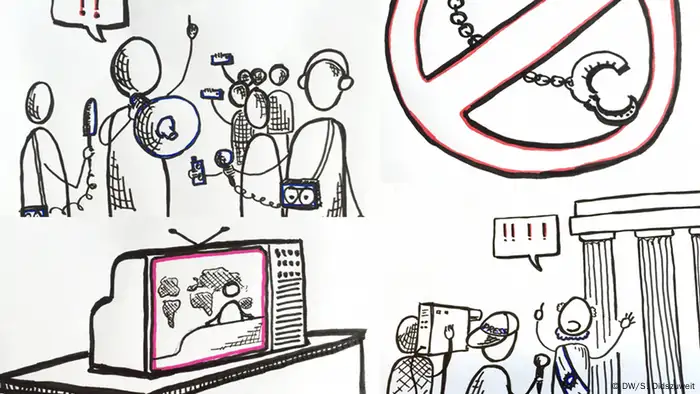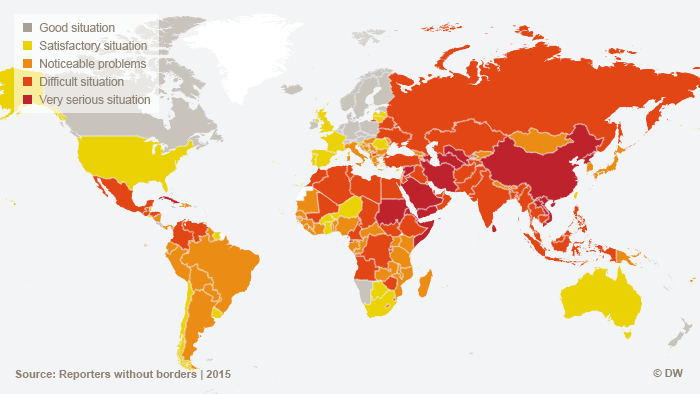Insights
Five tips to using media freedom indices
Rankings and indices are a popular way to compare media freedom in various countries. They aren't perfect though and it is important to bear some things in mind when using them as a reference or research tool.
1) Don't rely on just one index.
Assessments of media freedom by different organizations can differ considerably even when they are conducted within the same year. Take the Reporters Without Borders and Freedom House 2014 rankings for the Philippines, for example. Freedom House ranks the Philippines 87 out of 197 countries whereas Reporters Without Borders ranks it 149 out of 180 countries. This difference is in part because Reporters Without Borders places more weight on violence against media workers – and the Philippines has been among the most dangerous countries for journalists in recent years. Another large difference is with Togo – the African country is ranked considerably better by Reporters Without Borders (76/180) than by Freedom House (146/197).
2) Look beyond the better-known media freedom rankings of Reporters Without Borders and Freedom House.
There are several other media freedom assessments that are worth checking out. These include IREX's Media Sustainability Index; the Media Barometers published by the Friedrich Ebert Stiftung, a German foundation; and UNESCO's Media Development Indicators assessments for various countries.
3) Don't overrate rankings.
Every kind of comparison is prone to flaws, media freedom rankings included. So be careful when comparing the ranking of one country to another or keeping track of one country’s position over time. A country's score might actually be more revealing than its ranking. This is because it is actually possible for a country's score to rise (indicating declining media freedom) at the same time as the country improves its ranking because media freedom in other countries has declined even more.
4) Be aware that methodology varies.
All of the media freedom assessments embrace the fundamental human right of freedom of expression and all have elaborate tools for evaluating how conducive media systems are to free media coverage. Nonetheless, approaches do differ and as we have already seen, the nuances in the methodology used can make a difference – and these nuances are not always obvious. For example, the Friedrich Ebert Stiftung’s Media Barometers include the requirement that state broadcasters transform into truly public broadcasters. IREX, however, places less emphasis on public service broadcasting models and views the market as the prime guarantor of media independence.
5) There is no such thing as an objective media freedom assessment.
Media freedom indices are compiled by human beings – people who have individual knowledge, notions and views of the world. And people are never completely objective. In addition, the various indices consult with different groups of people, meaning different opinions emerge: the country scores of IREX’s Media Sustainability Index are predominantly determined by a panel of 10 to 14 local experts in each country whereas Freedom House relies on ratings of experts who sometimes do not live in the country they are analyzing. For its part, Reporters Without Borders uses both for its assessments: a network of correspondents and the organization’s own research.
Unfree world
Despite some of the issues surrounding media freedom indices, they still all point to one obvious conclusion – today's world is still a hideously unfree place when it comes to freedom of the media.
According to Freedom House’s 2014 report, 44 percent of the world’s population lives in countries rated “not free” and a minority of 14 percent – or one in seven people – lives in countries rated “free” (the remainder live in countries rated “partly free”).
Reporters Without Borders currently lists 20 countries, including China, Iran and Saudi Arabia, where the situation for media freedom is “very serious.”
Want to find out more? The Media Freedom Navigator, an online tool created by DW Akademie, gives you an overview of different media freedom indices. It provides access to media freedom data for each country, background information on the respective index and additional links. You can also take a look at our guidebook for more details.
DW recommends
WWW links
- Date 27.04.2015
- Author Alexander Matschke/kh
- Feedback: Send us an e-mail. Please include your name and country in your reply.
- Print Print this page
- Permalink https://p.dw.com/p/1FDgf
- Date 27.04.2015
- Author Alexander Matschke/kh
- Send us your feedback.
- Print Print this page
- Permalink https://p.dw.com/p/1FDgf


